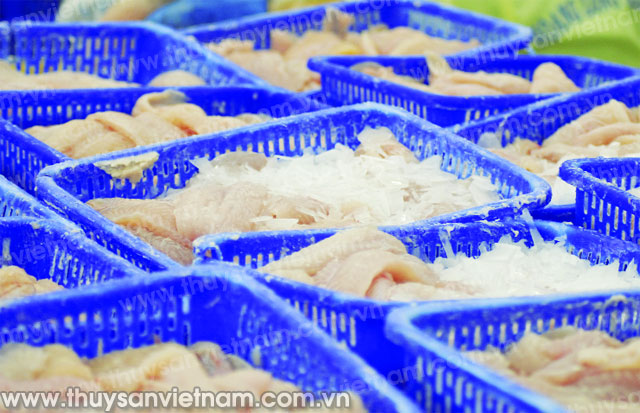Vietnam’s Tra fish is facing challenges caused by the fierce competition in the market. However, remarkable success will only cometo the enterprises that can seize the opportunities.
Sign of saturation
In all seafood exports in 2014, Tra fish went down from 26% in 2013 to 22% (1.76 billion USD) with shipments to the EU falling 10.7% and the US, 11.5%. The drop in the export value is mainly attributed to the increasingly fierce competition and tax fluctuation.
2015 is expected to be harsh with the implementation of a series of hindrance policies. The United States Department of Commerce (DOC) has just released the POR10 with anti-dumping tax imposed on frozen Tra fish fillet almost twice that of the initial review. If the export value to the US keeps declining 11.5% as in 2014, it will deal a heavy blow on Vietnam’s Tra fish.
The Tra fish farming area is projected to reach 5,500 ha and yield around 1 million tons. However the sale would be difficult.
Favorable global market
The dream of global market is not as beautiful as roses, it always comes with thorns. To penetrate into markets, Vietnam needs to sign commercial agreements as keys to overcome formidable tariff barriers imposed by developed countries.
Vietnam is planning for deeper integration in 2015 with further agreements to be signed and implemented. It is an important milestone for Vietnam to sign the TPP agreement with 11 other Asia-Pacific countries with a combined population of 790 million who make up 40% of the global GDP and one-third of the global trade value. The establishment of the ASEAN Economic Community (AEC) in 2015 will create a lot of changes in the manner of operation in the region.

Tra fish export faces more challenge to meet 2015 target – Photo: Ngoc Trinh
Accordingly, competition will turn into mutual cooperation. Vietnam then should hold a bigger role in the community. The common market of 600 million people and a combined annual GDP of 2 trillion USD would become a big cake.
Vietnam’s seafood export value reached 7.9 billion USD in 2014 against 6.2 billion USD in 2012, with major importers being the US, the EU, Japan, and Korea.
The participation of the US, Japan and Korea in the Trans-Pacific Strategic Economic Partnership Agreement (TPP) as well as the free trade agreements (FTA) Vietnam will sign with the EU, Japan, Korea, and the Customs Union of Russia, Belarus, Kazakhstan will help ensure the sale of Vietnam’s products.
Boost competitiveness and value
A trade agreement is not a miracle to Vietnam as after signing the deal, the country has to go into competition with existing members of that commitment for the same preference. Meanwhile, those members might reach other agreements with other partners, which causes a never ending competition. Such agreement will create a prerequisite for Vietnamese enterprises to enter a fair playground where discrimination treatment no longer exists.
However, Vietnam is clearly benefiting from tax reduction and tariff policies as it is fresh to the international integration. Vietnam’s seafood export turn-over will rise.
But according to some experts, the turnover increase does not mean that it would bring more interests, since agreements will boost trading so that partners of Vietnam will deeply penetrate into its economy and has a role to play in the local market. If Vietnamese enterprises take the initiative for the input of the traditional product Tra fish but gain low profit, it means the integration fails to achieve its high efficiency. Furthermore, if farmers have to import fingerlings or feed, they will earn low profit.
As for glazing matter, Vietnamese enterprises have been struggling to meet requirements on the glazing rates (glazing water over total weight) of exported Tra fish which must comply with regulations of the importers. In other cases, glazing water must be less than 10%, or water content does not exceed 83% of the net weight of the product (total weight of Tra fish fillet after removal of glazing layer).
Researchers perceive that advanced technology has been slowly applied on Tra fish in years; while the shrimp industry has seen more foreign participation in the cultivation and export.
Tra fish enterprises and farmers should team up to build a trade mark and credibility of this product on the basis of the new science and technology research and modern business principles.
Many experts and traders hold that the Tra fish industry is dominated by Vietnamese companies (with 90% market share), therefore they should build technology, standards, trademark, and product diversification to customers’ taste. Comparied to imported white meat fishes or tilapia, Vietnam’s Tra fish has not been widely advertised and suitable standards and trademark not built over the past 20 years, and this holds back Tra fish development.
|
>> In 2015 Tra fish export value may reach around 1.76 billion USD as in 2014, reports VASEP. This will come with reach should the market matter is solved. |